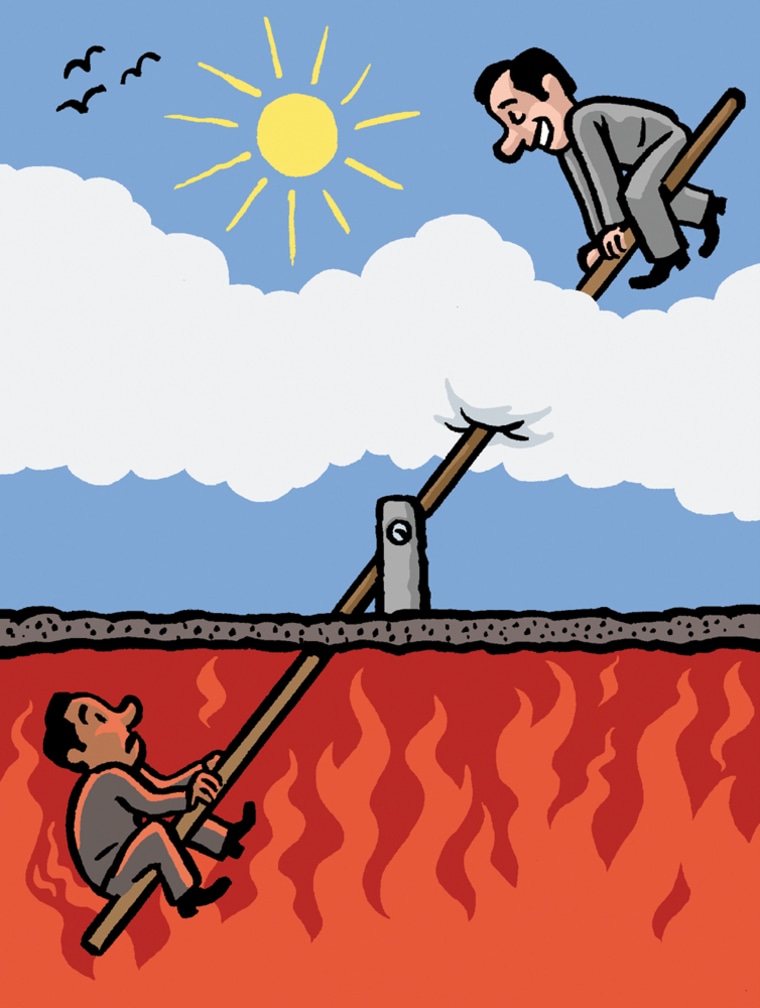American investors are frazzled. True, oil prices have fallen from their most vertiginous highs, the dollar is a bit stronger, and the stock market has actually risen over the past month. But none of those things have happened in a smooth and steady fashion.
The stock market’s “ascent,” in particular, has come straight out of “Sybil.” Since the beginning of July, there have been six days on which the S&P 500 has gone up or down by at least 2 percent, and daily moves of more than 1 percent—like the ones we saw at the start of last week—have come to seem practically routine.
Precipitous falls in the market have frequently been followed immediately by sharp rallies, and vice versa. And, while some of these moves have been occasioned by real news, more often it’s been impossible to tell just what made investors so damn exuberant or so gloomy.
Not that long ago, stock-market volatility appeared to be a thing of the past; between the end of 2003 and the end of 2006 there were only two days with moves of 2 percent. But, ever since the credit crisis began, big moves have become common.
The conventional explanation for this is “uncertainty”: Investors’ sense of what the future holds is in constant flux, so stock prices are, too. But, in the dearth of new news, you might expect uncertainty to result in tentative oscillations, rather than in the huge waves of buying and selling that we’ve been seeing.
In this market, the same traders who on Tuesday seem convinced that the apocalypse is nigh are, on Wednesday, just as sure that we’ve weathered the storm. If investors are unsure about tomorrow, why are they acting so certain about today?
Much of what’s happening is a function of what economists call “herding.” In conditions of uncertainty, humans, like other animals, herd together for protection. In unstable markets, this leads to trend-following: Buy when others buy, sell when they sell.
Many studies have found that mutual-fund managers herd, for a couple of important reasons. First, herding offers money managers the reassurance that their performance, whether good or bad, won’t diverge too much from the norm. It also gives them a chance to piggyback on the knowledge of their competitors.
That’s why, when a stock starts to rise, traders often assume that there must be a good reason, and therefore buy in order not to miss the party. This can create a feedback loop: As more people buy the stock, the more certain others become that there must be a good reason to do so (even if they don’t know what that is). And these feedback loops have been accentuated by the spread of quantitative-trading strategies that explicitly aim at riding the herd effect.
These strategies can magnify trends instead of countering them. The result is that an individual stock can move up or down 10 percent on a day with no real news.
Uncertainty also stimulates big moves because traders react to it in an unusual way. Work done by Daniel Ellsberg in the early '60s suggests that, faced with ambiguity, most people try to minimize possible losses. But there’s considerable evidence that many traders, by contrast, deal with ambiguity by trying to maximize potential gains—thus the familiar dictum that volatility creates opportunities.
In part, this is because it’s the job of traders to trade. But it’s also because market professionals appear to be chronically overconfident. A 2005 study of traders and investment bankers at two large banks, for instance, found that they significantly overestimated their knowledge of finance and the accuracy of their predictions. A 2002 survey of experienced foreign-exchange traders found, similarly, that they were far more sure of their market forecasts than performance justified.
Overconfidence matters, because it can encourage excess trading. A study of individual investors by the economists Markus Glaser and Martin Weber, for instance, found that investors who thought more highly of their ability also traded more.
What’s worse, the effect seems to be magnified in times of uncertainty. The business-school professors Itzhak Ben-David and John Doukas, in a study based on 20 years of trading by institutional investors, found that when there’s a profusion of “ambiguous information” about stocks investors trade more frequently, not less. And they do so even though, on average, they end up losing on their trades.
Oddly, then, the very things—uncertainty and lack of information—that might seem to make less trading and smaller bets advisable are pushing stock-market traders in the opposite direction. And this tendency is exacerbated by the fact that we are in a down market: The S&P 500 has fallen almost 14 percent this year.
Mebane Faber, of Cambria Investment Management, recently did a study showing that, historically, volatility is significantly greater in down markets than in up ones. One likely reason is that traders, like gamblers, often find themselves “chasing losses”—if you’ve lost a lot, it’s tempting to make big bets, in an attempt to get your money back.
So far, all this volatility has had little lasting effect on the value of the stock market. But in the long run volatility is a very bad thing, because it makes ordinary investors less inclined to trust markets. As a corrective to the recklessness of recent years, this might seem desirable, but too much risk aversion makes capital more expensive for everyone from businesses to homeowners, and the economy less dynamic.
Once we get a clearer idea about the future, today’s volatility should diminish. But for now we’re stuck in a Yeatsian market: the best lack all conviction, while the worst are full of passionate intensity. Let’s hope the center can hold.
